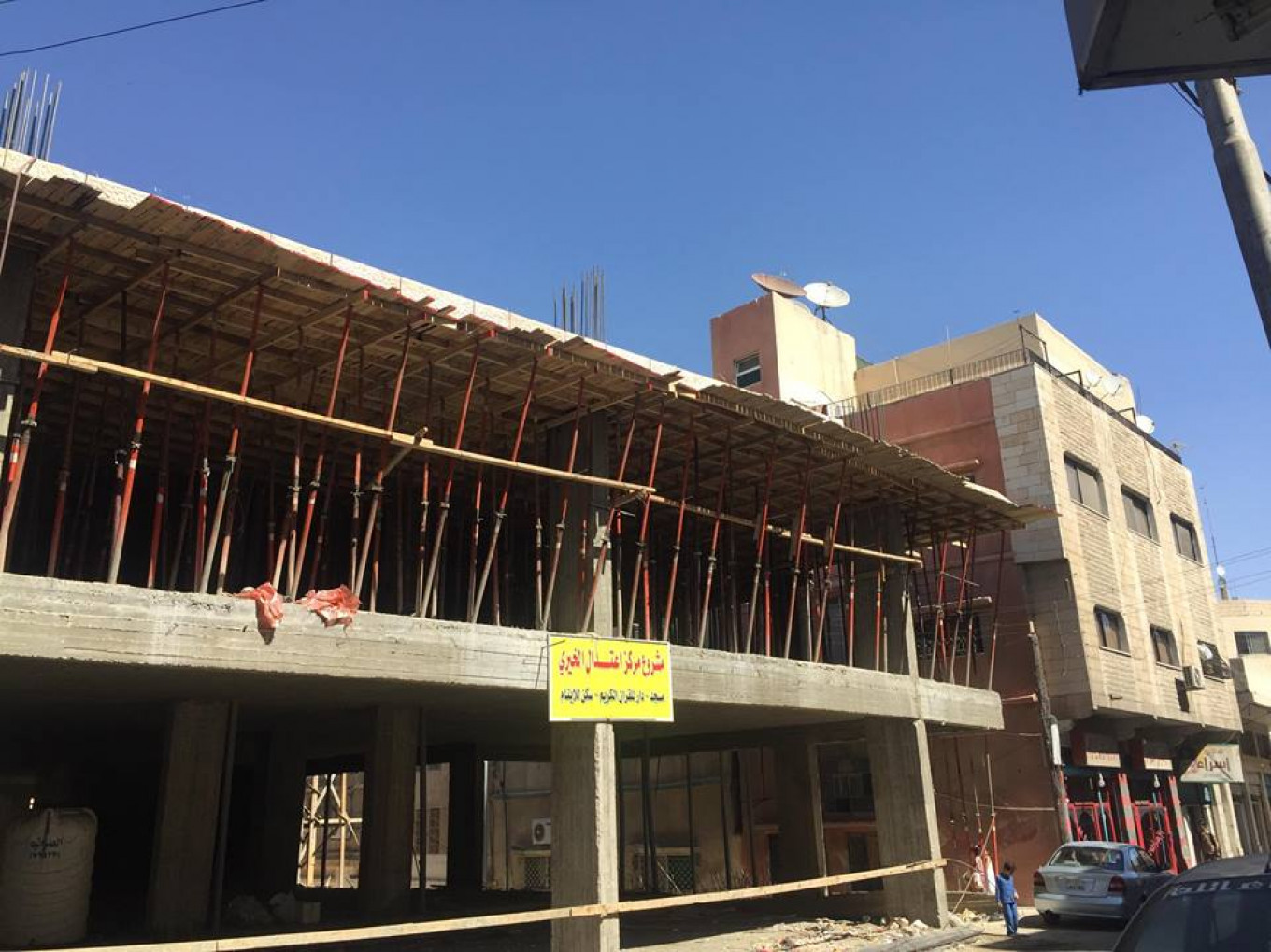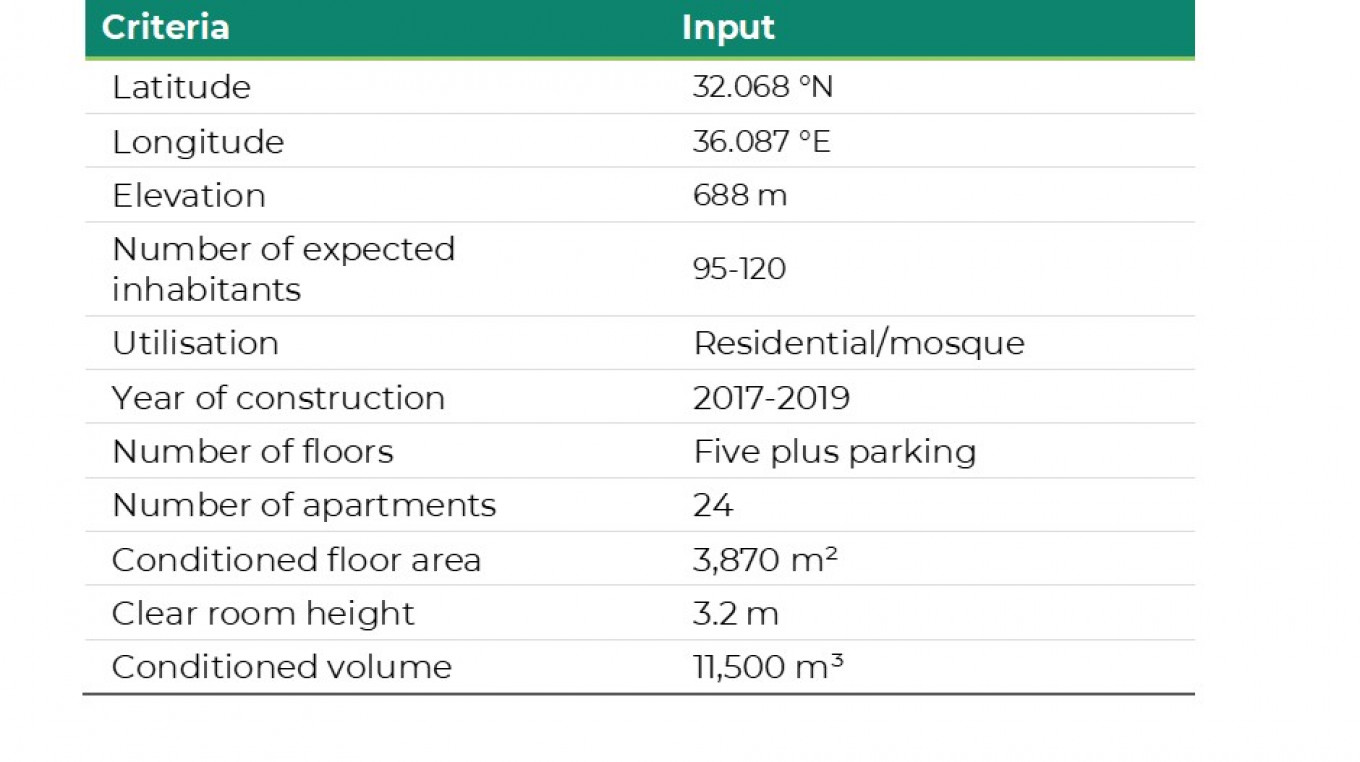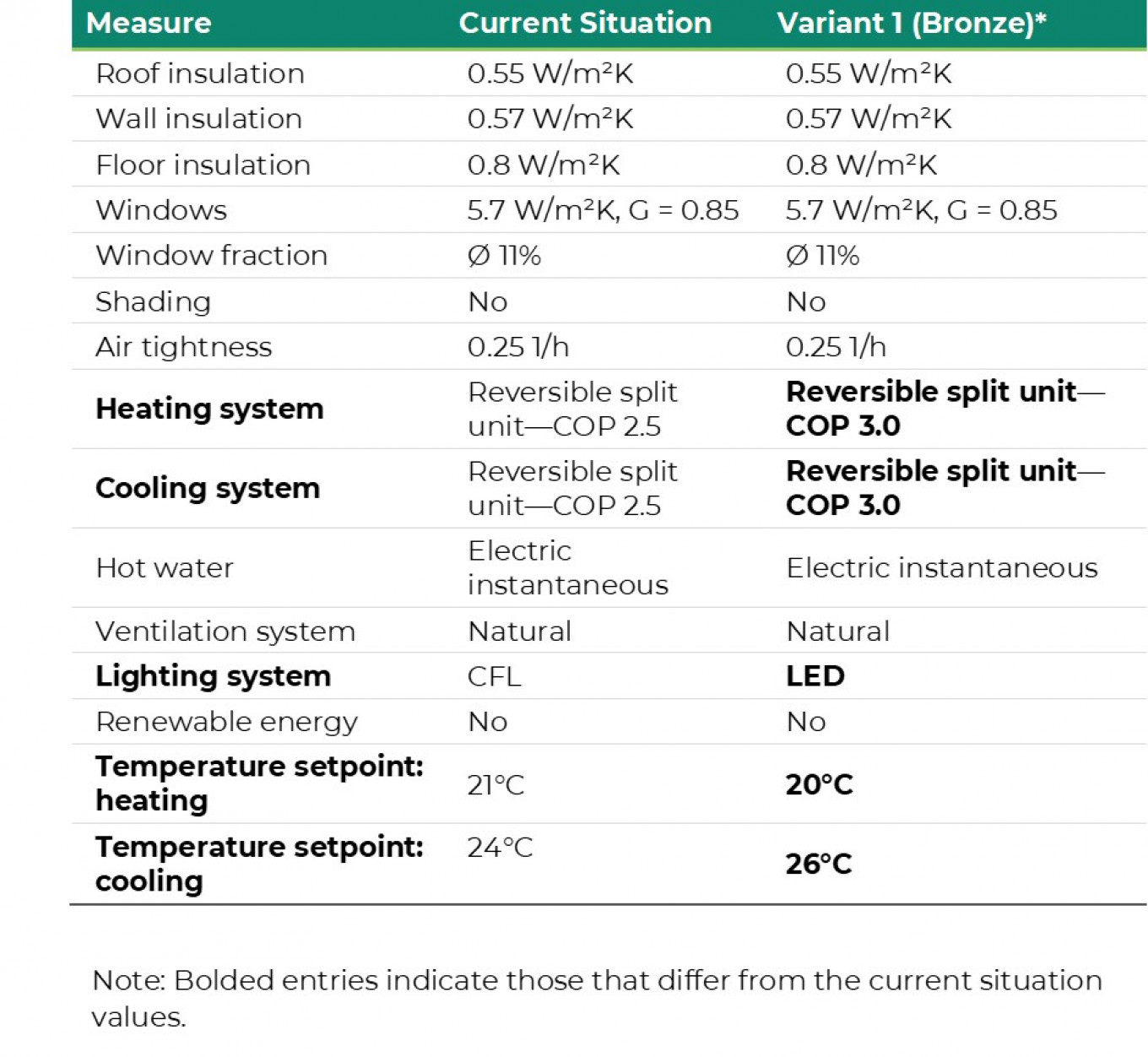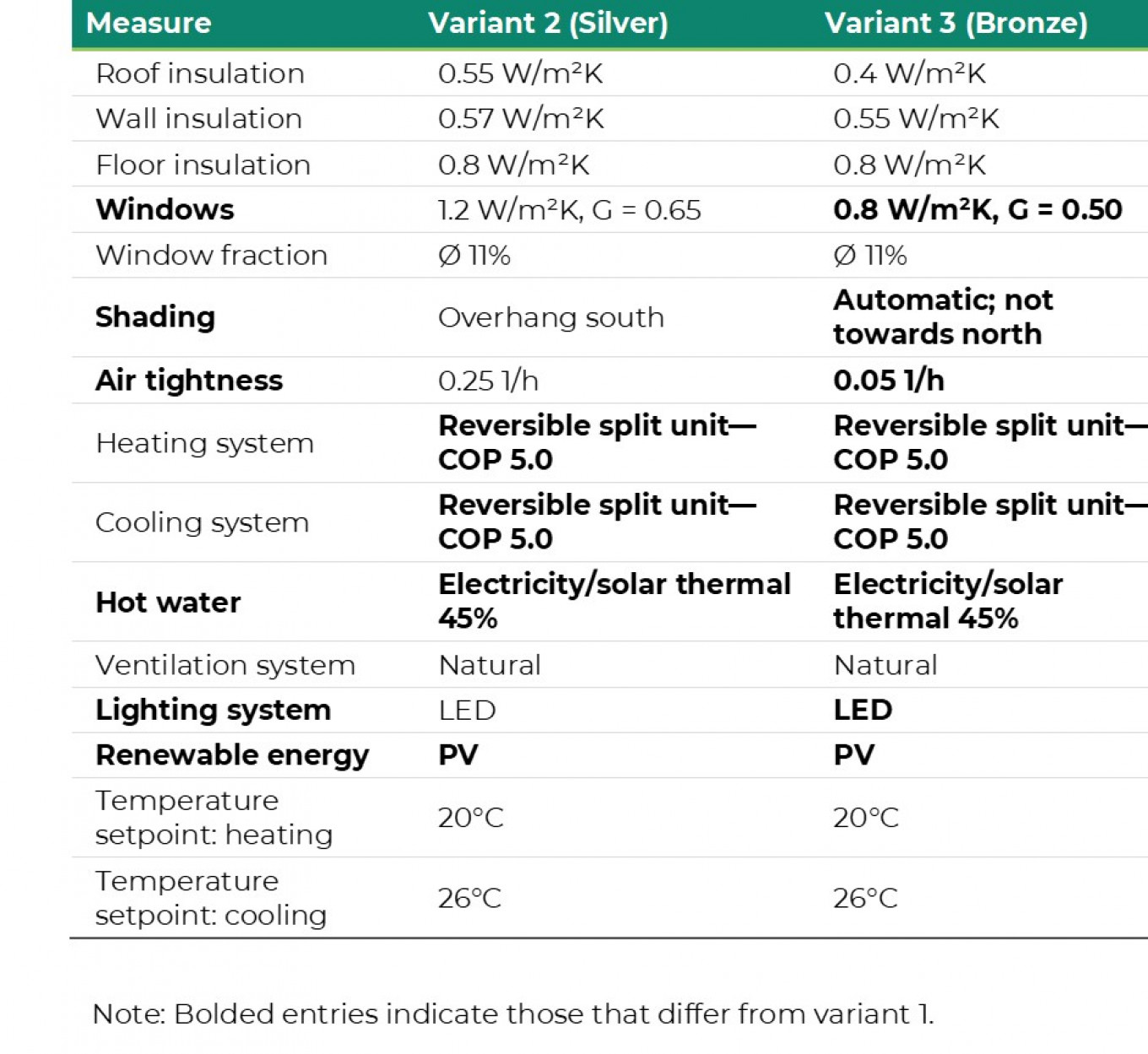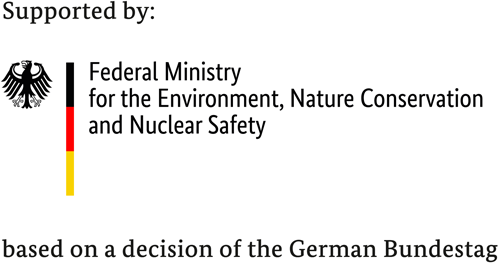Ea´tedal Complex, Zarqa (Jordan)
General Information
The Al-Urwa Al-Whathqa Charity Association was founded in 1965 and is working towards establishing several social projects and residential buildings for comfort and development of orphans and people in need. Zarqa is Jordan’s third-largest city after Amman and Irbid with approximately 1.36 million citizens in 2015 and a total area of 4,761 km2. Zarqa is considered a residential and industrial city. It is located 15 miles (24 km) northeast of Amman. The project was planned to be built from 2017 to 2019. It contains residential properties and a mosque; the residential part consists of 24 apartments for an expected 95-120 inhabitants. The floor area is 3,870 m2 with a clear room height of 3.2 m, resulting in a conditioned volume of 11,500 m3.
The climate in Amman is moderate. The annual average temperature is 18°C and only a few hours per year undercut the freezing point. Similar heating and cooling degree days of around 1,150 kd indicate a balanced and moderate need for heating and cooling. High horizontal irradiation of more than 2,000 kWh/(m²*a) and more than 1,100 kWh/(m²*a) for east, south, and west orientations create opportunities for solar-based energy generation.
In Jordan, natural gas is used only for power generation plants, and liquefied petroleum gas (LPG), diesel fuel, and electricity are used in space heating. The mean energy prices are JOD 0.13 per kWh (EUR 0.16 per kWh) for electricity and JOD 0.05 per kWh (EUR 0.06 per kWh) for diesel.
Current Situation (BaU)
The building envelope is in line with current building code (BaU – Building as Usual); however, no special attention has been given to use of renewable energy sources: heat and cold supply are reversible split unit with a COP of 2.5, and hot water is supplied by an electric instantaneous appliance. The set temperature is 24°C and 21°C for heating and cooling, respectively.
In this scenario, cooling energy represents the largest portion of energy demand with a total share of 32%. Domestic hot water demand reaches 27% of total demand, and heating and lighting have the smallest shares with 21% and 20%, respectively. The current situation reaches an energy demand of 51.4 kWh/(m²*a) and an environmental impact of 33.9 kg CO2e/(m²*a). For a unit of 90 m², the energy cost will reach about EUR 59.63 or JOD 50.11 per month. This represents the standard building package.
Variants
All measures are grouped according to their payback time. All measures with a payback time of less than 2 years are implemented with the low cost variant (bronze). For the moderate variant (silver), all measures with a payback time of less than 5 years are implemented. Therefore, all measures from the bronze package are included. With the highly energy efficient variant (gold), all proposed measures are implemented, with a payback time greater than 5 years and smaller than 15 years.
Technical Description – Variant 1 - Bronze package
The bronze package offers the best cost efficiency in terms of energy savings and paybacks due to lower energy costs. The package consists of three main measures: adjusting set temperatures (20°C for heating, 26°C for cooling), LEDs for lighting, and an increased COP of 3.0 for cooling and heating.
Technical Description – Variant 2 - Silver package
The moderate silver package consists of bronze variant and additional implemented measures: increased COP of 5.0 for cooling and heating, rooftop PV and solar thermal appliances, and low E glazing (U-value 1.2 W/m²K) as well as overhangs for south-orientated windows. These measures offer high energy savings and moderate paybacks, with a payback time of less than 5 years. Unlike the standard and bronze approaches, the silver approach also achieves reductions for domestic hot water and additional savings using PV.
Technical Description – Variant 3 - Gold package)
The highly energy efficient gold package consists of the following additional measures: triple glazed windows (U-value 0.8 W/m²K), automatic shading, and an air infiltration rate of 0.05/h. These measures offer high energy savings but are bound to high investments costs, which leads to payback times of 15 years.
Results
Variant 1, the bronze package reaches an energy demand of 36 kWh/(m²*a) and an environmental impact of 24 kg CO2e/(m²*a). For an apartment of 90 m², the energy cost reaches approximately a monthly rate of EUR 42 or JOD 35. In comparison with the investment costs of the current situation / building as usual (BaU), the total is increased by 24%. However, the energy costs are reduced by 29%. The reductions take place in heating, cooling, and lighting.
Variant 2, the silver package will reach an energy demand of 17 kWh/(m²*a) and an environmental impact of 8 kgCO2e/(m²*a). For a residential unit of 90 m², the energy cost will reach approximately a monthly rate of EUR 15 or JOD 13. In comparison to the investment costs of the standard package, the grand total related to energy efficiency is increased by 291%, however the energy costs are reduced by 75% which makes up for the incremental investments over time. Unlike the standard and bronze approaches, the silver approach also achieves reductions for domestic hot water and additional savings using PV.
Variant 3, the gold package consumes 15 kWh/(m²*a) of final energy and 8 kg CO2e/(m²*a) are released. The investment costs related to energy efficiency are about 440% higher than the standard approach, and the energy cost reduction reaches 78%. For a unit of 90m², this results in a monthly energy rate of EUR 13 or JOD 11.
![Figure 13 Specific final energy demand [kWh/(m²*a)]](https://www.buildings-mena.com/image/1360/09/fig13.png)
![Figure 14 Specific emissions [kg CO2e/(m²*a)]](https://www.buildings-mena.com/image/1360/27/fig14.png)
![Figure 15 Specific energy costs LBP/(m²*a) [EUR/(m²*a)]](https://www.buildings-mena.com/image/1360/46/fig15.png)
![Figure 16 Specific investment costs LBP/(m²*a [EUR/(m²*a)]]](https://www.buildings-mena.com/image/1360/c9/fig16.png)
Recommendation
As the silver package combines high energy and CO2 savings with reasonable investment efforts, it was recommended. To achieve the calculated results, the following approach should be followed. To reduce energy demand, educate inhabitants (e.g., through flyers and training) about adjusting the set temperature for cooling and heating, achieve improved thermal insulation by investing in low energy windows (U-values 1.2 W/m²K), and investigate overhangs towards the south—in this course, the shading of the surrounded buildings on the southern façade should be rechecked. To utilise solar energy on the roof, unshaded space towards the south should be reserved for the installation of PV/solar collectors (e.g., when installing water tanks, satellite dishes). Also, the cost benefits of PV and solar thermal should be verified by obtaining offers from local suppliers. Furthermore, energy efficient appliances and lighting should be used. Specifically, reversible split units with a COP of at least 5.0 for cooling and heating. Also, LED technology should be used for lighting.

